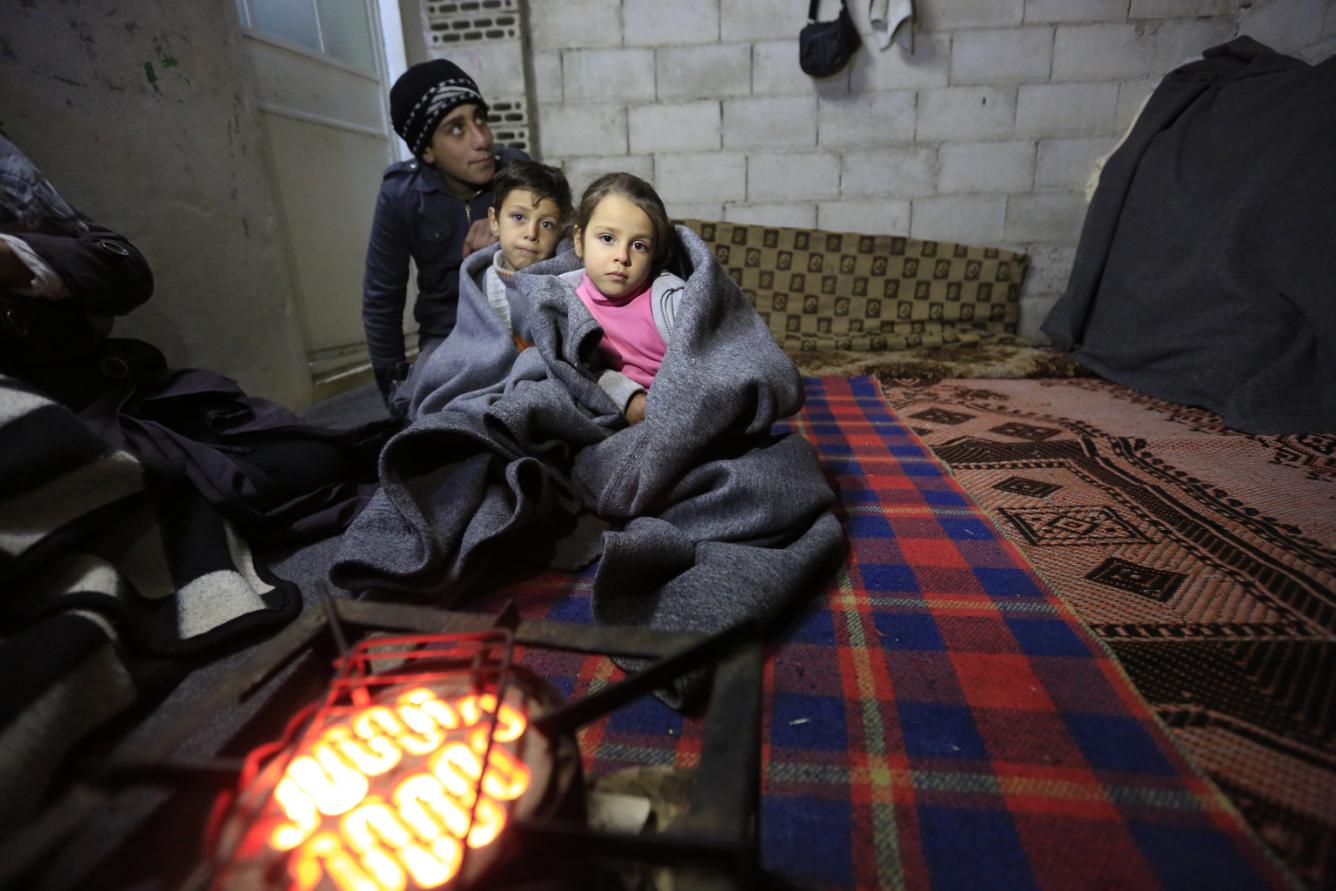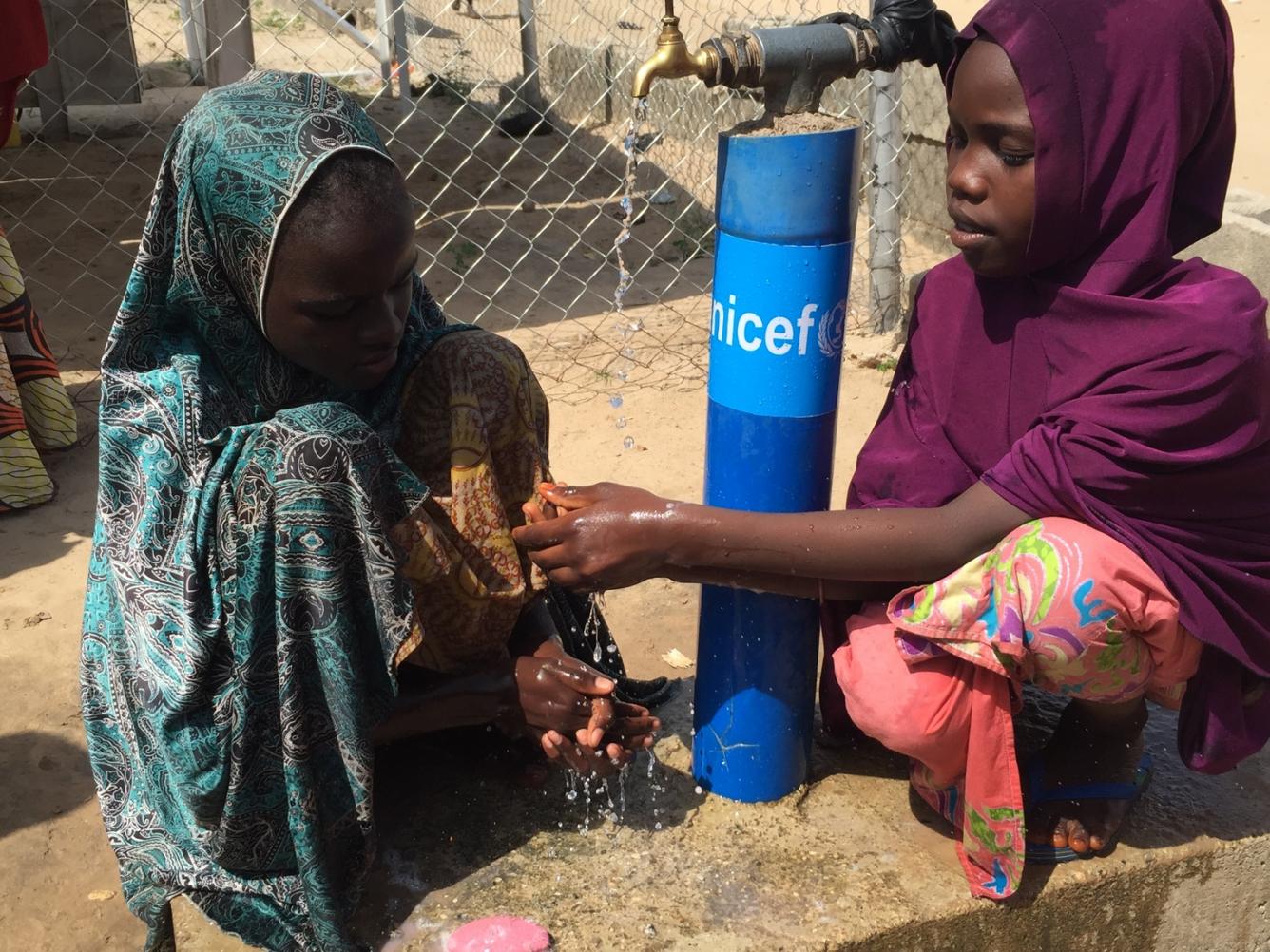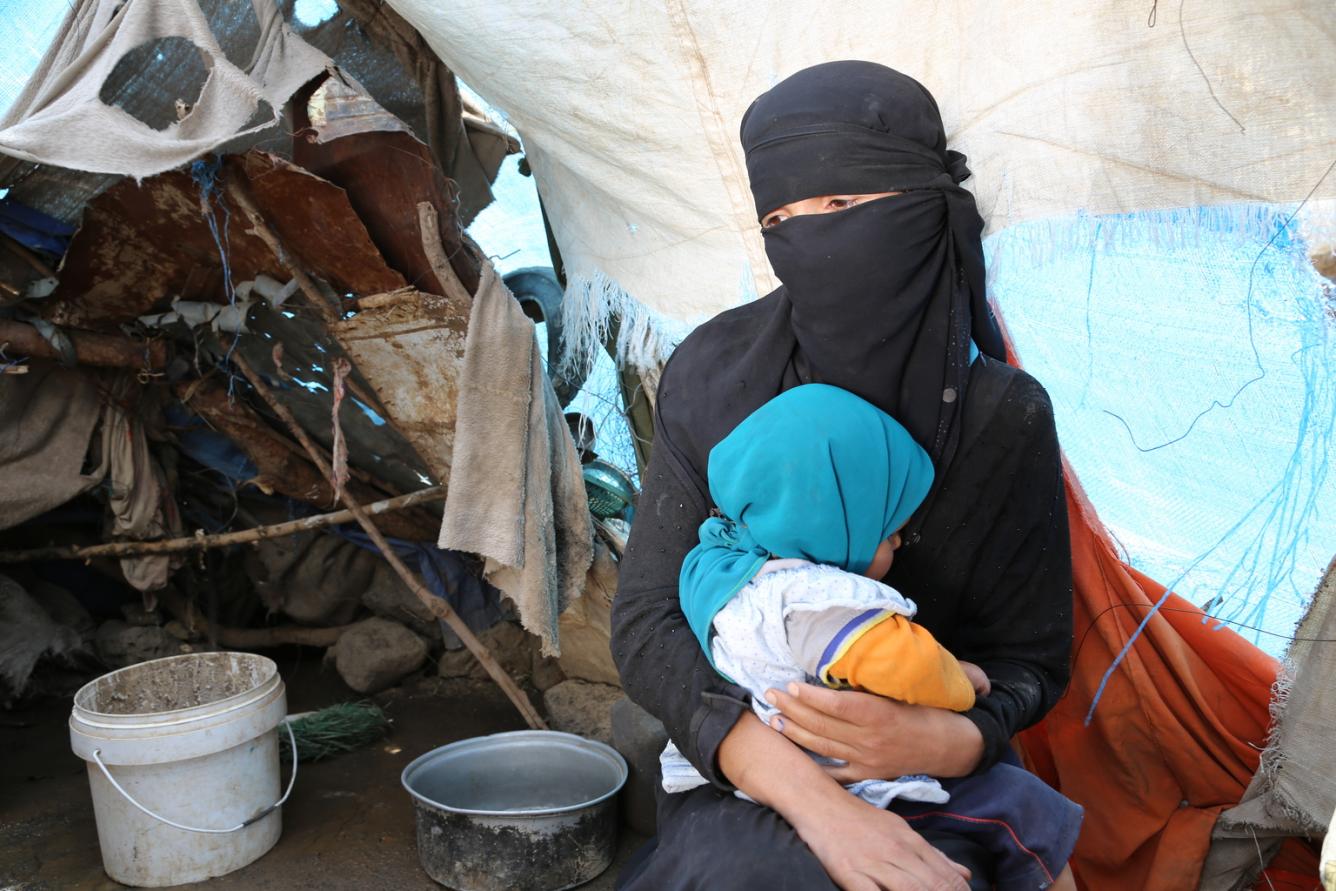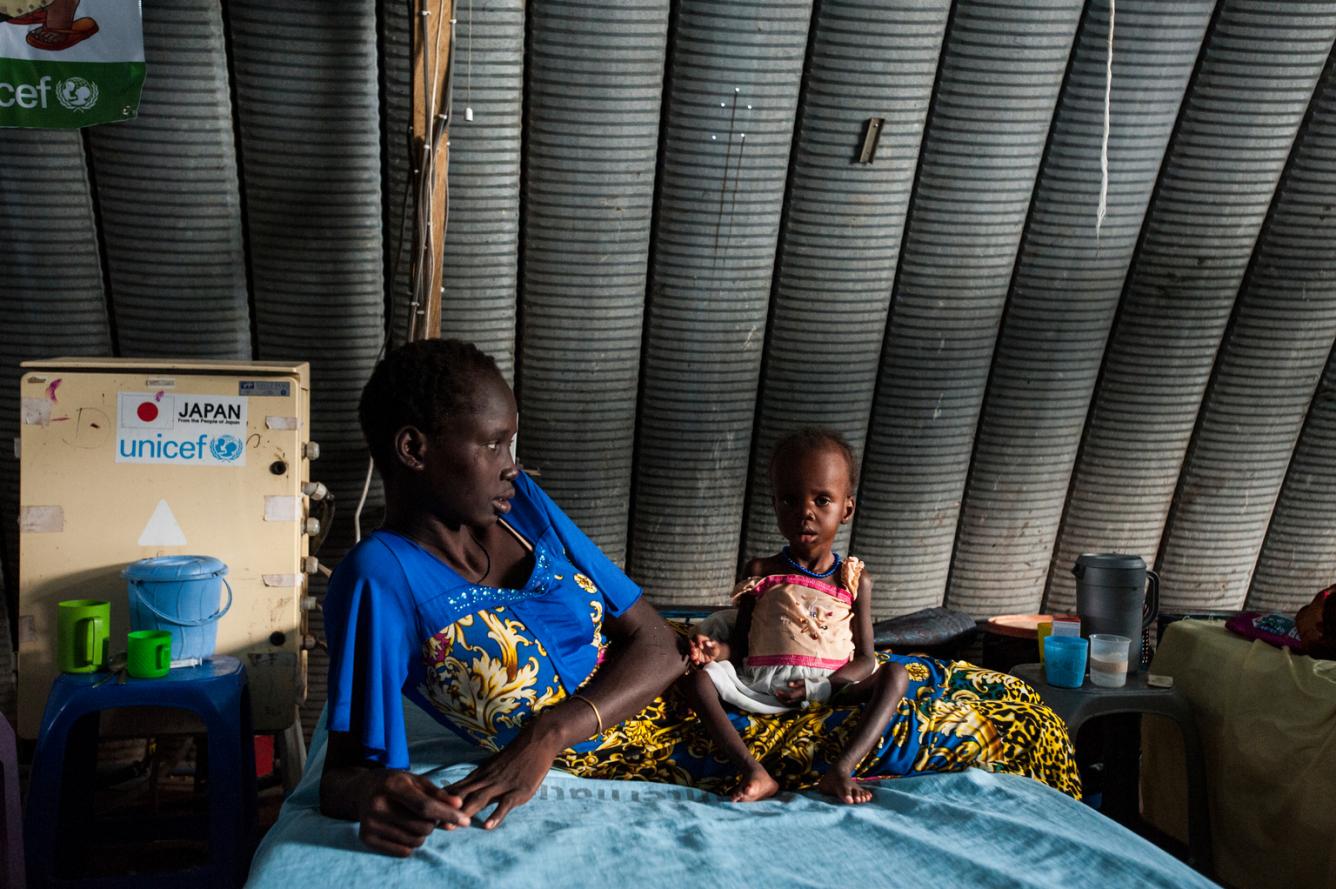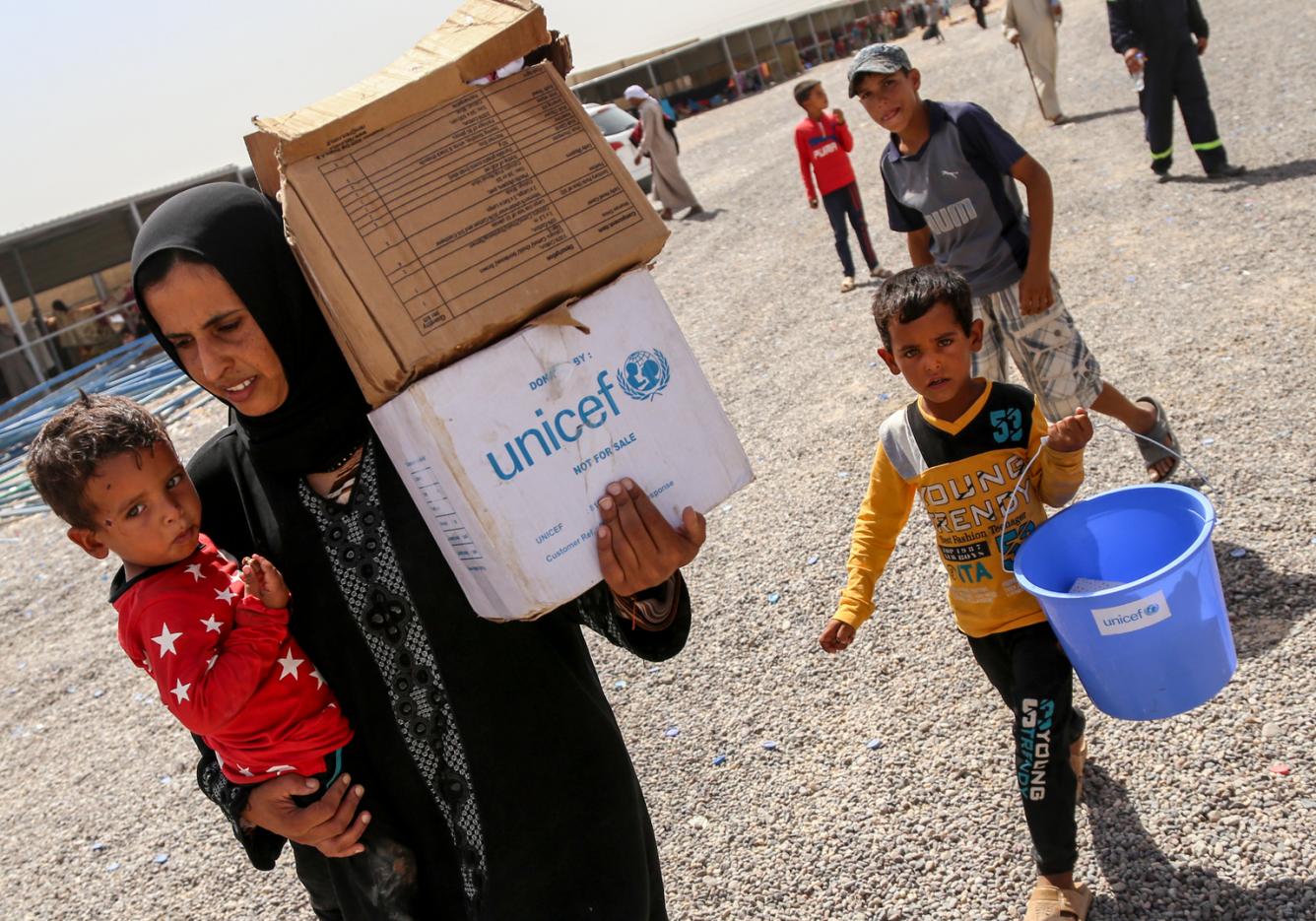
2016 was a year of challenges and upheaval across the globe. The ongoing migration and refugee crisis has uprooted nearly 50 million children worldwide, leaving them vulnerable to violence and exploitation. Conflict and natural hazards continue to take a toll on children, with nearly one in four living in areas affected by crisis. In Haiti, the destruction caused by Hurricane Matthew has left 2.7 million people in need of life-saving assistance. In the aftermath of the conflict in Central African Republic, one in two children is affected by stunting.
As the first year that the world worked towards achieving the Sustainable Development Goals, 2016 also marked the beginning of a renewed effort to end poverty and promote equity for all children. Despite the tremendous progress driven by the Millennium Development Goals, there is still much room for improvement. Today, undernutrition contributes to nearly half of all deaths in children under five. There are pronounced disparities between the both the rich and the poor and urban and rural populations in access to improved water and sanitation. As of 2014, 25 million children of primary school age are expected to never attend school. Two thirds of them are girls. And every five minutes, a child dies as a result of violence.
Yet, in 2016 there were also great accomplishments. By the start of the year, the Ebola crisis in West Africa had come to an end, though UNICEF continued to support children in the wake of the epidemic. In April, world leaders gathered in New York to sign the Paris Climate Agreement, an important step towards addressing the risks and effects of climate change.
And in December, UNICEF marked its 70th anniversary of serving as a defender of children around the world, regardless of their gender, religion, race or economic background.
Our work in 2016 spanned all regions, across all sectors of international development and disaster relief. Read on to see what has been accomplished for children living in five of the world’s most complex and dangerous crises.
Syrian crisis
The Syrian Arab Republic is one of the most dangerous places in the world to be a child. After almost six years of conflict, the country is now facing the largest humanitarian crisis in the world, with grave protection and human rights violations occurring daily. An estimated 13.5 million people are affected by the crisis, including six million children. More than two million Syrian children are now living as refugees in neighbouring countries. In 2016, UNICEF and partners scaled up their provision of essential services and supplies to affected communities and displaced populations, particularly the most vulnerable.
Snapshot of UNICEF’s impact as of November 2016:
- More than 1.5 million people given hygiene promotion session and/or a hygiene kit
- About 895,000 children enrolled in formal education
- Nearly 370,000 children enrolled in non-formal or informal education
- More than 21 million children under five vaccinated against polio
- More than 900,000 children and adults participating in child protection and psychosocial support programs
Nigeria regional crisis
In 2016, security returned to some areas of north-east Nigeria, allowing aid workers to visit sites that were previously under Boko Haram control. But this new access revealed an acute humanitarian situation, with alarming rates of malnutrition among children and an outbreak of wild poliovirus. In the three most directly affected states of Borno, Adamawa and Yobe, an estimated 8.5 million people will require humanitarian assistance in 2017, including 1.63 million internally displaced persons, more than half of whom are children.
Snapshot of UNICEF’s impact as of 31 December 2016:
- About 745,000 conflict-affected people provided with access to safe water
- Nearly 160,000 children under five with severe acute malnutrition admitted to therapeutic feeding programs
- More than 4.2 million conflict-affected people reached with emergency primary healthcare services
- More than 185,000 conflict-affected children reached with psychosocial support
- Nearly 107,000 conflict-affected children given access to education in a protective and safe learning environment
Yemen
With the escalation of conflict in March 2015, Yemen is facing a major humanitarian crisis. Some 18.8 million people – 70 per cent of the population – are in need of humanitarian assistance, including 9.6 million children. Child rights violations have increased dramatically and children are facing significant psychological stress. The status of health, nutrition and sanitation in the country is dire, with a recent cholera crisis putting 7.6 million people at risk.
Snapshot of UNICEF’s impact as of 23 November 2016:
- Nearly 4.5 million people provided with improved water sources and sanitation services
- More than 347,000 children given access to basic learning supplies
- More than 4.8 million children under five vaccinated against polio
- More than 4 million children under five given micronutrient interventions
- About 434,000 children receiving psychosocial support
South Sudan
The situation in South Sudan has deteriorated significantly since the start of 2016 and is compounded by the worsening economy and fragile political situation. By the end of 2016, an estimated 31 per cent of the population was experiencing severe food insecurity, and the situation is only expected to worsen in 2017. Children are the most vulnerable, and make up 70 per cent of those seeking refuge in neighbouring countries.
Snapshot of UNICEF’s impact as of 31 December 2016:
- More than 203,000 children aged six to 59 months with severe acute malnutrition admitted for treatment
- Nearly 610,000 children aged six months to 15 years in conflict-affected areas vaccinated against measles
- More than 742,000 people provided with access to safe water
- More than 693,000 children and adolescents reached with critical child protection services
- About 314,000 children and adolescents aged three to 18 years provided with access to education in emergencies
Iraq
Violence in Iraq intensified in 2016, with one in five children at risk of death, injury, sexual violence, recruitment into armed conflict or abduction. As many as 11 million people require humanitarian assistance and more than 1.4 million children are displaced, the majority of whom have lost an entire year of school. In Mosul, following a military operation to retake the city in October, more than 100,000 people remain displaced, half of them children.
Snapshot of UNICEF’s impact as of 30 November 2016:
- More than one million people provided with access to a sufficient safe water supply
- About 57,000 school-aged children reached through temporary learning spaces
- More than 88,000 children participating in structured, sustained, resilience or psychosocial support programs
- More than 5.6 million children 0–59 months vaccinated against polio in crisis-affected areas (among internally displaced persons and host communities)
- More than 1.2 million vulnerable people newly displaced by conflict receiving rapid response mechanism kits within 72 hours of trigger for response
Looking ahead
Yet throughout 2016, in the midst of what could often seem like a bleak humanitarian landscape, we bore witness to everyday acts of kindness and humanity. A Syrian refugee who volunteered to assist refugees and migrants as they arrived on the Greek island Lesbos. A Norwegian man who welcomed a Syrian family to his hometown with open arms. A barber in Greece who gives free haircuts to young refugees. Villagers in Niger who carried benches and tables to temporary classrooms set up for displaced children.
We received hundreds of Tiny Stories from famous and amateur authors, expressing their dreams for every child. We heard from aid workers, recalling their toughest and most rewarding moments on the front lines. We met and supported loving caregivers worldwide, who work tirelessly to provide comfort and safety for our children.
As we enter 2017, we are working with the same determination to offer help and hope all over the world, for every child.
To help UNICEF continue making an impact by delivering life-saving support to children caught in crises, click here.


